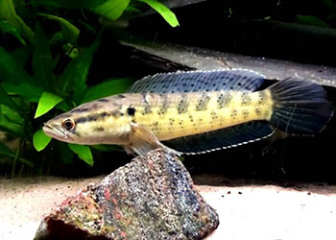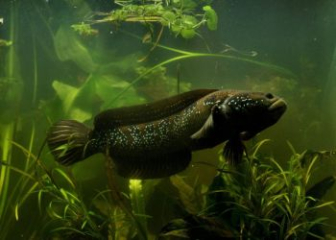Channa amphibius - The most primitive and expensive snakehead fish
Blog | by
Channa amphibeus (Chel Snakehead or Borna Snakehead), a snakehead species endemic to India, is ancient, rare and most expensive.
Channa amphibeus snakehead fish , also known as red snakehead fish, Borna snakehead fish, is one of the oldest and rarest snakehead fish species in the Channidae family. They have a very prominent and equally magical appearance with reddish brown or purple color, shy temperament, like to live in seclusion, only appearing in the Garo Hill mountain region - India. Because of these things, the red snakehead snakehead fish has become a dream of ornamental snakehead fish players.
In today's article, let's learn more about the origin , appearance, habits and how to raise this rare snakehead fish!
Information about snakehead fish Channa amphibeus :
| Scientific name | Channa amphibeus |
| Common name | Borna snakehead fish, Chel snakehead fish, red snake Channa,... |
| Source | Chel River - India |
| Class | Actinopterygii - Ray-finned fishes |
| Species | Anabantiformes - Snakehead fish |
| Surname | Channidae - Snakehead fish, snakehead fish |
| Size | Maximum 40 cm, average 25 - 35 cm |
| Lifespan | About 10 years |
Origin of snakehead fish Channa amphibeus
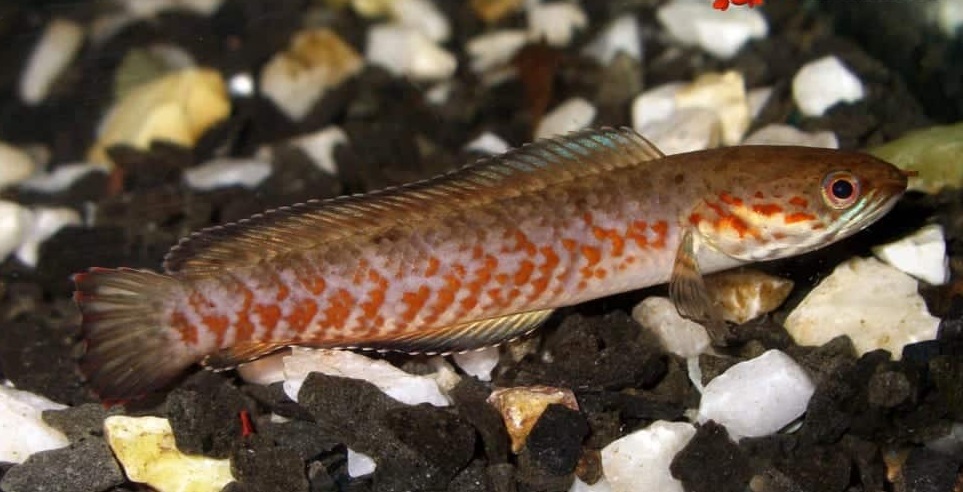
Channa amphibeus is a primitive snakehead fish.
Channa amphibeus, also known as Borna snakehead snakehead, Chel snakehead snakehead, is an endemic fish species native only to the Chel River, Brahmaputra River basin, Bhuta foothills, India, and does not occur naturally anywhere else in the world.
In nature, they live in highland streams, where the current is fast, strong, has a lot of oxygen and a rocky or gravel base, and the temperature is low, only 18 - 24 degrees Celsius.
This fish was first scientifically described in 1845, by John McClelland. For many decades, Channa amphibeus was considered extinct in the wild, however, in the 1990s - 2000s, they were found in the Garo Hills of Northeastern India.
Currently, Channa amphibeus has become one of the rarest ornamental snakehead fish species on the ornamental fish market due to its small quantity, high price, and demanding the strictest breeding conditions.
Appearance of snakehead fish Channa amphibeus
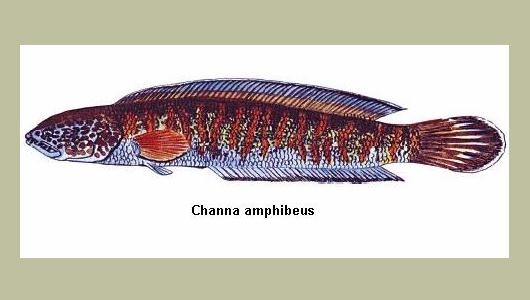
The drawing shows a detailed appearance of the red snakehead fish.
Right below are details about the appearance of the snakehead fish Channa amphibeus, let's find out why this snakehead fish is so rare!
- Size : Up to 40 cm in adult fish, average 25 - 35 cm.
- Shape : Long body, slightly flat, balanced proportions, big head
- Color : The fish's body has a reddish brown or dark purple background, this color often darkens with age.
- Pattern : The fish's body has faint spots, not as clear as many other ornamental snakehead fish species.
- Dorsal & anal fins : Light blue or metallic blue on the edges, darker as the fish matures.
- Caudal fin : Round, with purple or blue edges, depending on the condition of the fish.
- Eyes : Round, large, light orange-red, looks quite fierce.
- Mouth : Wide, strong jaws, sharp teeth.
- Swimming style : Slow, graceful.
Behavior of snakehead fish Channa amphibius
Below are the most typical behaviors of the red snakehead fish, a mysterious fish in the Channidae family. Let's find out if they have any interesting behaviors!
Live alone, reclusive
Channa amphibeus is a shy snakehead fish, preferring to live alone and in seclusion, especially when young. They prefer to take shelter in caves, crevices in wood or large tree roots in streams. They rarely appear in open water, and are usually only active in the early morning or late afternoon when the temperature is low and the light is soft.
Like to live in cold water
Unlike other fish in the snakehead family, Channa amphibeus only likes to live in places with low temperatures of 18 - 24 degrees Celsius, and does not like warm water. This is completely consistent with their origin and original habitat, where cool streams are on high mountain tops.
Attack prey in a surprise way
Although normally, Channa amphibeus swims slowly and gracefully, during the hunting process, this fish will lurk and then quickly rush out to capture its prey in the blink of an eye. Combined with good eyesight and quick reflexes, they work well in low light conditions.
Highly territorial, aggressive
Red snakehead fish are very aggressive, especially towards their own kind. If you keep two adult fish in the same tank without enough space or hiding places, it is very easy for them to bite each other to death.
In particular, this aggressiveness will become more intense during the breeding season, they are ready to attack any fish that appear in their lair and territory.
Like to rest and breathe air
Like many other snakehead fish, Channa amphibeus is capable of breathing both through gills and air through an accessory breathing organ, so often at night, you will see them rising to the surface of the water to gasp for air.
In addition, they also have an extremely interesting habit of "sleeping" for many days, especially when the temperature drops. For this reason, Channa amphibeus is also known as the "dormant water snake".
Instructions for raising snakehead fish Channa amphibeus from A–Z
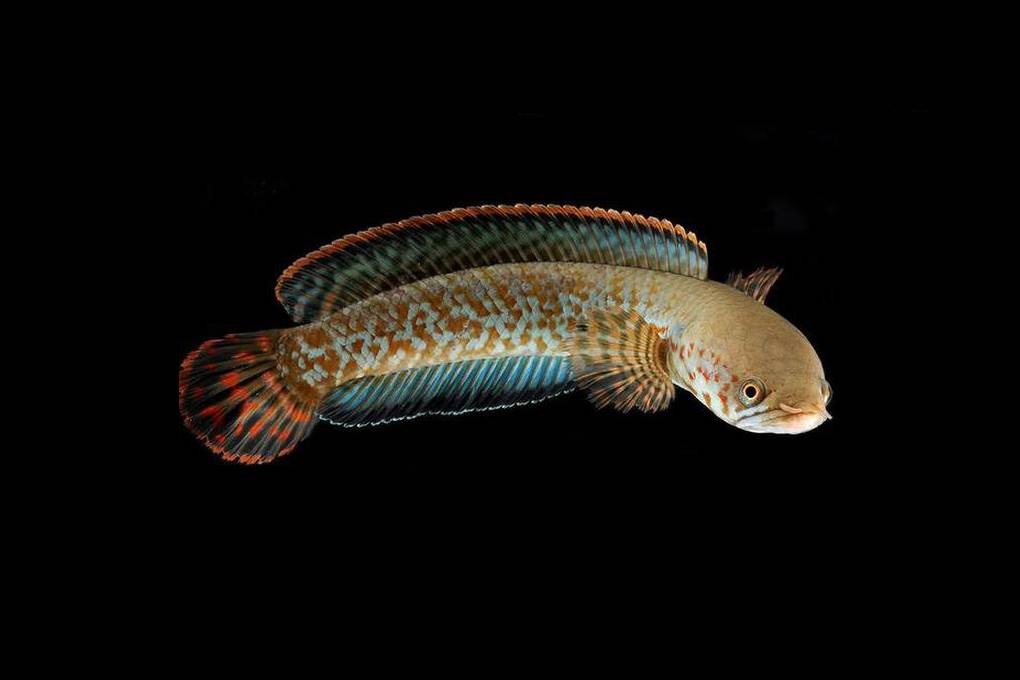
Channa amphibeus snakehead fish is only suitable for keeping in tanks with dark background.
Channa amphibeus is a species of ornamental snakehead fish that is not for beginners but only suitable for experienced aquarium fish players because they require high techniques. Right below, we will guide you on how to raise red snakehead snakehead fish in the most detailed way, let's learn more.
Preparing the ideal tank for Channa amphibeus
First, to successfully raise this fish, you need to design an ideal tank that meets the following basic requirements:
- Tank capacity : Minimum 200 - 300 liters/fish
- Tank length : Over 1 meter
- Temperature : 18 - 24 degrees C, not over 26 degrees C
- pH : 6.2 - 7.0
- Light : Requires dim, weak light, not shining directly into the aquarium.
- Aquarium background : Decorate with gravel, stream rocks, driftwood, caves, aquatic plants,...
- Cooler : Required to maintain low temperature
- Filtration system : Choose a strong external filter, combined with continuous oxygenation.
- Decoration : Place many caves, PVC pipes, and driftwood to help fish have shelter. Add dry Indian almond leaves to create a dark water environment. Do not use sand or bright backgrounds.
Diet suitable for Channa amphibeus fish
Red snakehead fish are predatory and carnivorous, so when kept in a tank, you can feed them the following foods:
- Fish fry provide natural protein.
- Live shrimp helps fish to have beautiful color.
- Earthworms, earthworms
- Frozen food cut into pieces
- Small insects such as earthworms, crickets, superworms.
Note :
For this fish species in particular, you should not train them to eat industrial food because they will often refuse to eat and if they do eat, they will easily get digestive disorders.
Clean and check the tank regularly
To ensure a safe water environment for Channa amphibeus fish, you need to clean and check the water quality in the tank periodically, specifically as follows:
- Change 10 - 20% of the water every week, use dechlorinated water.
- Clean the filter and aeration system every 2 weeks.
- Check pH and temperature regularly.
- Observe unusual fish behavior every day. If you see fish lethargic, not eating, or coming to the surface of the water, you need to check the water temperature immediately.
Should only be kept alone, not in pairs.
As you know, red snakehead fish are highly territorial and aggressive, so it is best to keep them alone to limit fighting and stress. Only keep them in pairs when they have been naturally paired before and the tank area is large enough with plenty of hiding places.
Common problems and how to handle them
Like many other snakehead fish, Channa amphibeus often has some unusual health problems that lead to illness, weakness and even death. Specifically as follows:
| Symptom | Reason | How to handle |
| Fish stop eating, often lie at the bottom |
Temperature above 25 degrees Celsius Fish are stressed |
Reduce the temperature to the ideal level, between 18 - 24 degrees Celsius. |
| Fish discolored, discolored |
Fish lack hiding places. The tank background is too bright. Direct light into the tank |
Add shelter Change to dark background Limit direct light into the tank. |
| Fish bite each other | Highly territorial and aggressive temperament | Separate the fish immediately or move them to a larger tank. |
| Fish scales peeled off |
Fish fighting Due to collision |
Fish should be monitored regularly for any unusual signs. Ensure water quality in the tank. |
How much is Channa amphibeus snakehead fish?
Because it is a rare and expensive ornamental snakehead fish, currently in the Vietnamese ornamental fish market, price information of Channa amphibeus fish is very limited and not public.
However, in the international market, the price of this fish ranges from 3,500 - 4,000 USD for an adult fish, about 85,000,0000 - 100,000,000 VND. When transporting to Vietnam, there will be additional costs for paperwork, origin as well as shipping costs, so their price will be much higher.
Beautiful Channa amphibeus snakehead fish pictures
Because this fish is usually quite rare and expensive, it is not very popular. Therefore, right below we have collected many beautiful, realistic images of red snakehead fish Channa amphibeus, please admire more to broaden your horizons.
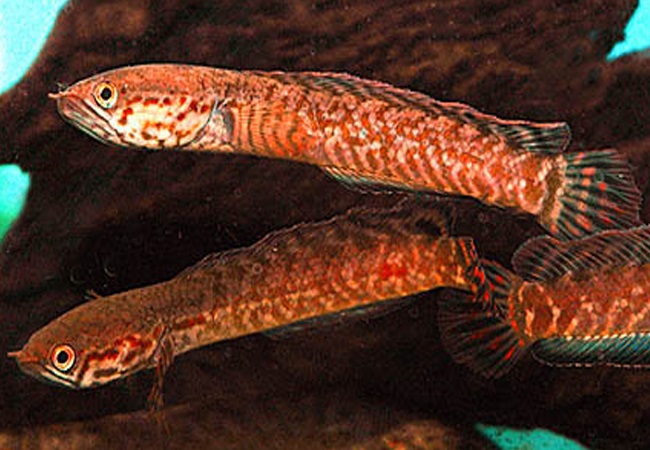
Channa amphibeus snakehead fish with colorful appearance.
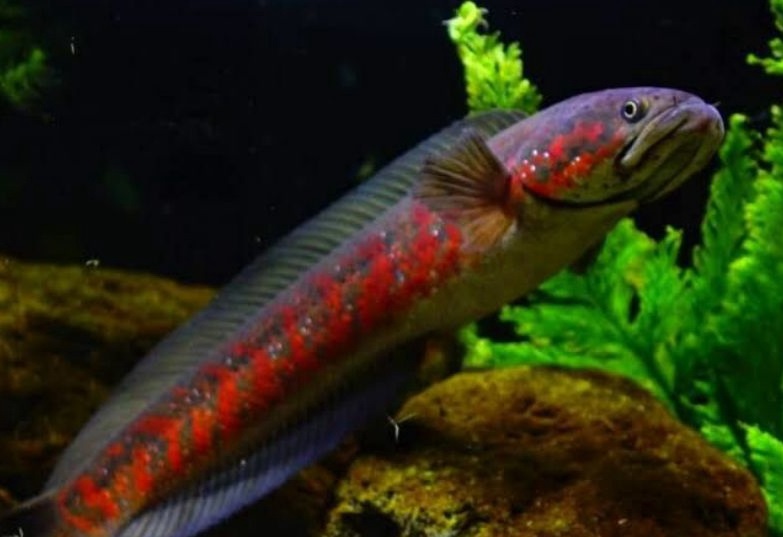
A red snakehead fish is showing off its colors in the aquarium.
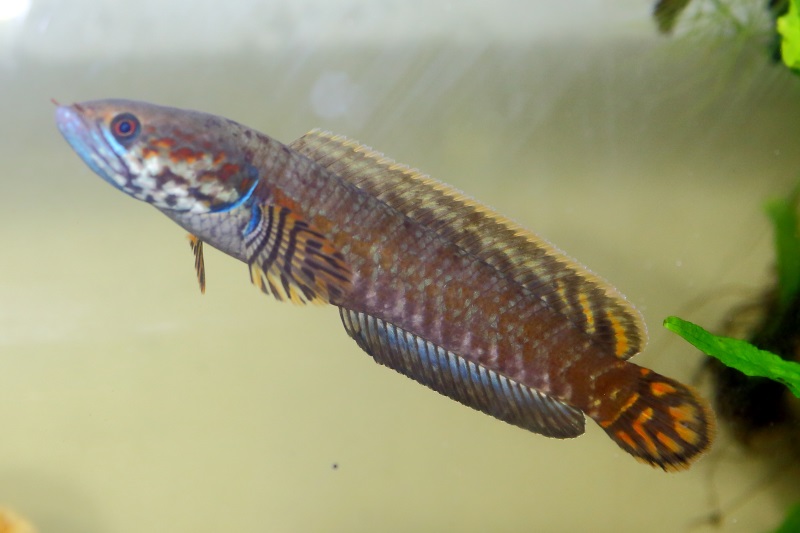
An adult red snakehead fish.
Thus, through the information that snakehead.info shares above, you can know that Channa amphibeus snakehead fish is one of the primitive snakehead fish species, with a unique appearance, a rare and most expensive "gem" in the world of high-class ornamental snakehead fish. They require high requirements for living environment, temperature as well as a lot of experience in caring for ornamental fish, not suitable for beginners.
Don't forget to follow the next articles in our Blog section to update more knowledge, experience and trends in raising ornamental snakehead fish in Vietnam!
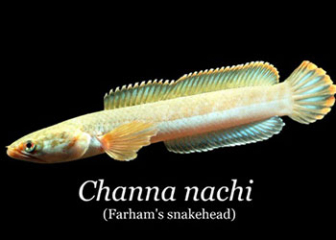



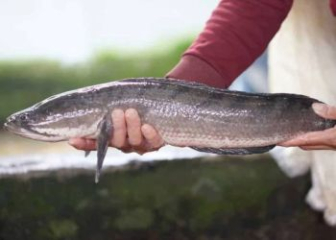
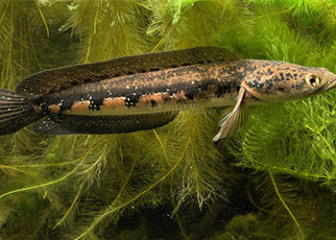

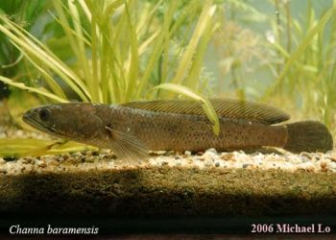
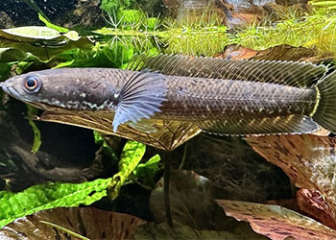
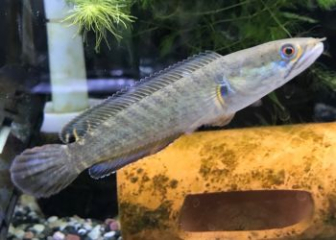
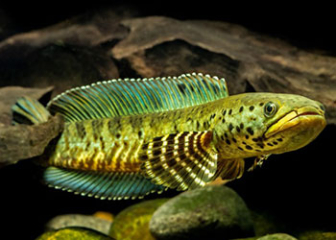
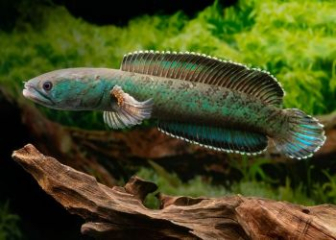

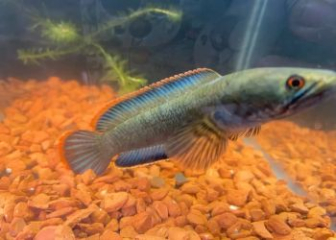
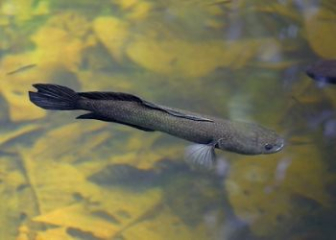
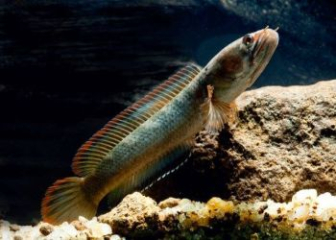
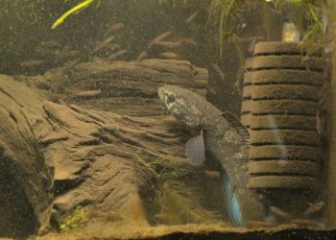
_350x250.jpg)
